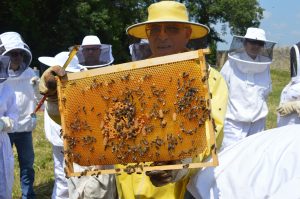This is an excerpt from the full length (85 minute) DVD “Alternative Beekeeping Using the Top Bar Hive and The Bee Guardian Methods“, available at BackYardHive.com
Beekeeping with top bar hives is getting more and more popular, as it is thought to be a more natural way to keep bees, more in tune with the way they would live in their natural environment. In other countries around the world, particularly in Africa, top bar beekeeping is still very common – the Langstroth hive being more expensive to make.
This top bar beekeeping DVD was filmed in the beautiful Colorado mountains. It includes footage from a top bar beekeeping workshop held by Corwin Bell, and shows hands-on techniques, close-up footage of hives, combs, cells and bees, and lots and lots of practical tips and techniques for the natural beekeeper.
I think it is beautifully filmed (as you can see from the extract), so it is also a delight to watch.
It is primarily aimed at beginner beekeepers – although experienced beekeepers will really enjoy it too – and goes from explaining the features of a top bar hive, getting your hive set up, sourcing your bees, working with your bees, right through to harvesting your honey – and lots more in between.
Watch it in full screen mode, and enjoy!



